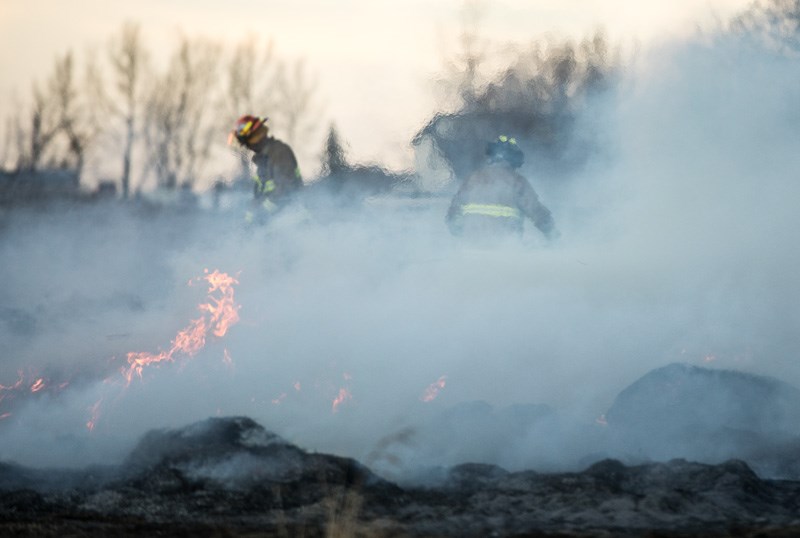Spring and summer in the region seem to have both missed their weather memos, bringing in the Calgary Stampede with a soggy yee-haw. However, you won't find emergency services complaining.
The drought conditions earlier this year saw most of southern Alberta in high to extreme wildfire danger by May, according to Alberta Wildfire. The bout of rain over the past two weeks has been a balm, but not a cure, to those concerns.
"The rains have definitely helped the situation, but we still need more," said Foothills Fire Chief Jim Smith. "We look at the amount of water that's in the ground, and typically the sloughs is where we draft water form in times of fire and even the sloughs are still dry right now.
"So we're still looking for more moisture, but this is a really big help to get us on the way to a better fall."
A lower-than-average spring rainfall coupled with an extended winter put southern Alberta in a dry spot: the Alberta Agriculture and Forestry 30-day drought index for Alberta from May 27 to June 25 showed south of Calgary was significantly drier than usual through June.
"The spring was really dry because the frost stayed in the ground a lot longer, so it ended up that the snow ran off instead of soak into the ground," said Smith.
With the influx of moisture, fire bans have been lifted for much of the province, barring Vulcan, Newell, and Cypress Counties. Banff and Jasper National Parks still have fire advisories, as well as various other towns and counties in the southern Alberta.
Meanwhile the fire hazard for the province shifted from glaring red to largely relieving shades of blue and green: low risk to moderate.
"I'd like to see the sloughs filled up, but I can't have everything," said Smith. "I'd like to see the sloughs full of water, and that helps the farmers but it also helps us in times of need, especially in the fall with the grass fires and wildland fires.
"It just helps to have water supplies closer to the fire than having to travel a long way for water."
Smith said that fire services typically see fires in the spring and fall, depending on how dry the vegetation is, though the bigger fires usually wait till fall.
"Right now the vegetation is quite moist, which is really good for us," he said. "But in the fall and the spring it tends to be very, very dry, all of the vegetation.
The shift in weather conditions came from a well-timed dip in the jet stream and a trough, according to The Weather Network, which pumped moisture from the Pacific into B.C.. and the Foothills of Alberta, with cooler than average temperatures.
All of B.C.. is still classified 'dry' or 'very dry,' and officials are keeping a close watch on the fire danger after several years of back-to-back fire seasons, according to The Weather Network.
Smith stressed that even with the risk of wildfires being down, local fire services are kept busy with more standard fires, such as pole and dumpster fires, that see an increase during the summers as well.
"The lower wildland fire risk is a good perspective, but we still have issues with those other fires as well during this time," he said.




